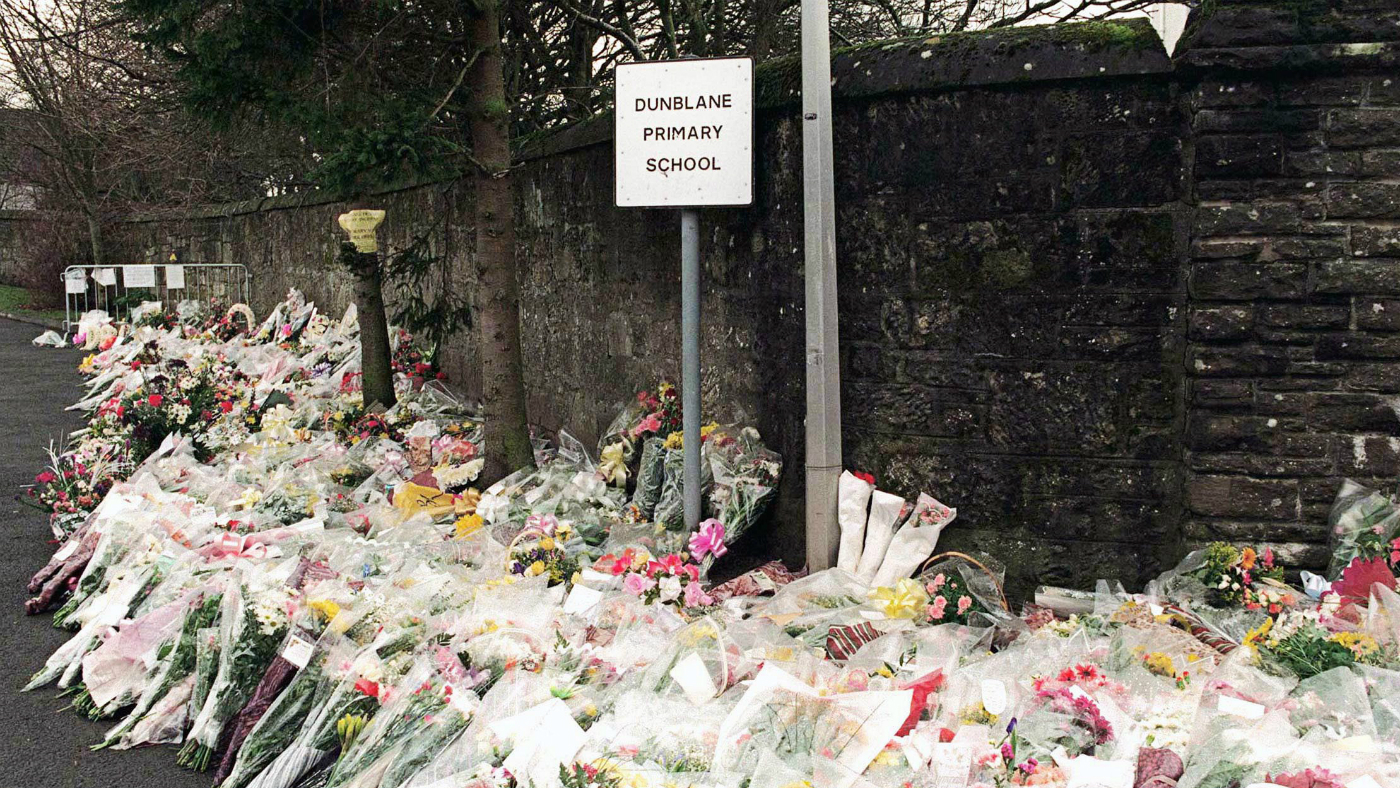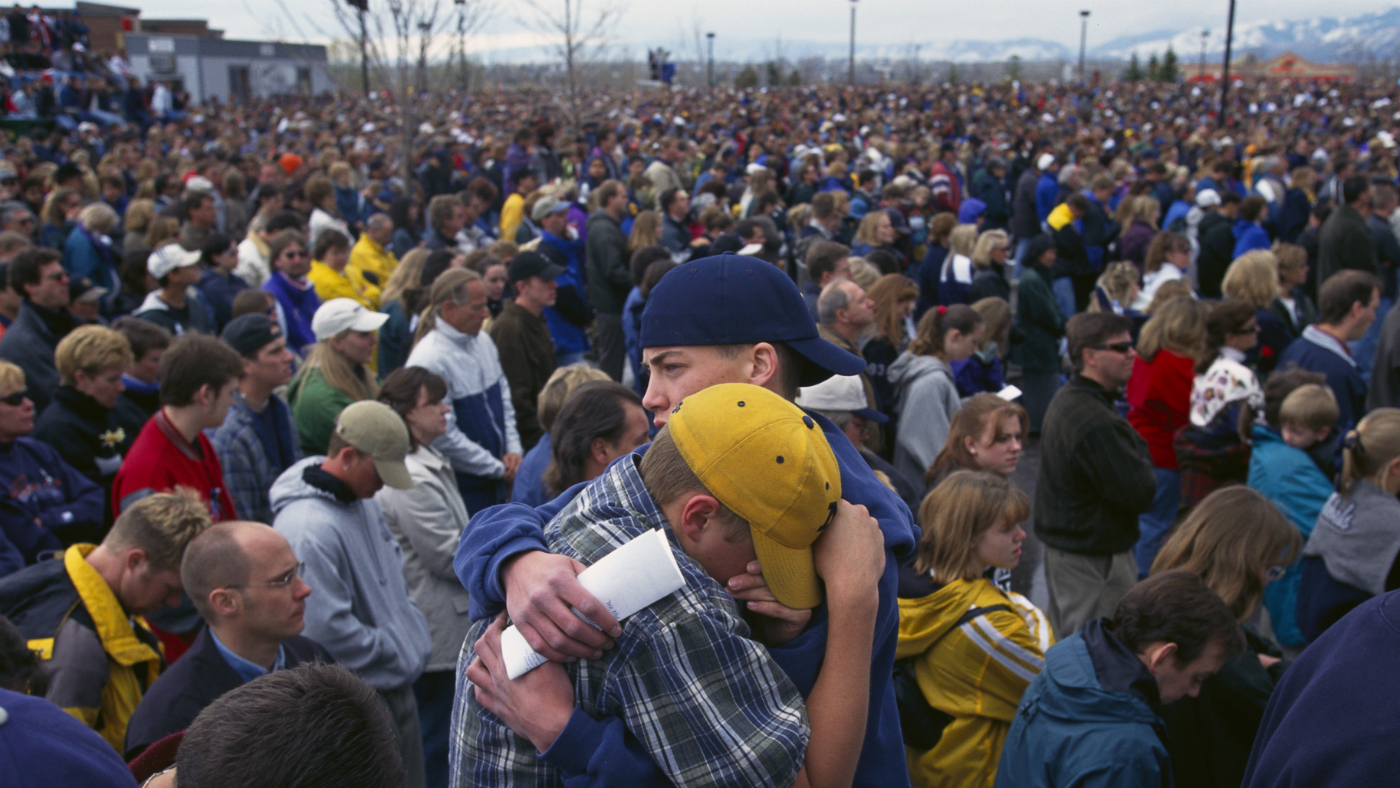How Britain put an end to mass shootings
Legislation passed after 1996 Dunblane massacre changed UK gun law for ever

The Democrats are hoping to strengthen background checks for prospective gun owners following the mass shooting at a primary school in Texas that led to the deaths of 19 children and two teachers.
On the evening of the massacre, Senate Democrats took steps to place a bill called the Enhanced Background Checks Act of 2021 on to the legislative calendar. The proposed bill would close something known as the “Charleston Loophole”, which “allows some licensed gun sales to go through before a required background check is done”, said CNN.
The measures have “languished in the Senate” since 2019 “amid Republican opposition”, said The New York Times (NYT). And even as they “publicly mourned” the fatal shooting in Texas, Republican senators “gave little indication that their positions had changed”.
The Week
Escape your echo chamber. Get the facts behind the news, plus analysis from multiple perspectives.

Sign up for The Week's Free Newsletters
From our morning news briefing to a weekly Good News Newsletter, get the best of The Week delivered directly to your inbox.
From our morning news briefing to a weekly Good News Newsletter, get the best of The Week delivered directly to your inbox.
This response can be contrasted with how Britain’s politicians reacted to the nation’s deadliest mass shooting in its history: the Dunblane massacre of 1996.
The school shooting was a watershed moment in the UK’s complicated relationship with privately owned firearms, with sweeping reforms made as a result. To this day, Britain has some of the toughest anti-gun legislation in the world – and since the legislation was put in place, no school shootings have taken place.
The massacre
At about 9.30am on 13 March 1996, Glasgow-born Thomas Hamilton entered Dunblane Primary School without warning, armed with two Smith & Wesson M19 .357 Magnum revolvers, two 9mm Browning HP pistols and 743 cartridges of ammunition. All had been purchased legally under UK firearm laws.
The 43-year-old shopkeeper walked into the gymnasium and immediately opened fire on a class of children and their teacher, Gwenne Mayor, who were warming up for a PE lesson. A total of 16 children were killed, some of them shot multiple times at point-blank range.
A free daily email with the biggest news stories of the day – and the best features from TheWeek.com
Mayor, a mother of two, was the 17th person to be shot and is believed to have been trying to shield the children.
Hamilton then fired a series of shots at an adjacent mobile classroom and into the playground, while walking back and forth across the gymnasium. None of these shots hit anyone.
In his final act, he pulled out one of his revolvers and shot himself in the mouth. The attack had lasted just four minutes, during which Hamilton had fired well over 100 shots and hit 32 people.
In the aftermath of the horror, the then Scottish secretary, Michael Forsyth, told people in the devastated town that he could not “find words to express the horror at what has happened here”.
The Queen said she shared “in the grief and horror of the whole country”.
“The children who were killed or badly injured were our daughters and sons, our grandchildren, our sisters and brothers, our nieces and nephews, our cousins,” wrote the victims’ families and the survivors in a 2018 letter.
Aftermath
The massacre had a “massive impact in Scotland, the rest of the UK and around the world”, with parents and relatives demanding “to know how a person like Hamilton could be allowed to own guns”, reported CNN.
A public campaign against gun ownership in the UK amassed almost 750,000 signatures, prompting a parliamentary discussion instigated by the then prime minister John Major, who subsequently launched the Cullen Report into the shooting
The report, published in October of the same year, suggested that the government introduce tighter controls on handgun ownership in the UK and consider an outright ban on private ownership of handguns.
In response, Major passed an amendment to the nation’s Firearms Act in early 1997 that banned all cartridge ammunition handguns, with the exception of .22 calibre single-shot weapons, in England, Scotland and Wales.
But for many critics, that was not enough. The then leader of the opposition Tony Blair used a promise to rid the country of its remaining handguns as a springboard to one of the most comprehensive election victories in UK history.
Following his election, in May 1997, Blair passed a second amendment to the Firearms Act that effectively banned all handguns for private use in the UK.
The Guardian said that overnight, “about 200,000 owners of handguns, most of whom kept them for pistol shooting, found their weapon banned and their pastime wiped out”. The new penalties for anyone in possession of an illegal firearm ranged from heavy fines to prison terms of ten years.
In 1996, the rate of gun homicides per 100,000 people in the UK was 0.14, or around 80-90 homicides per year. By 2012, that number had dropped to just 0.02, or around 12 murders.
According to Vice News, legislative actions taken by Blair’s government helped “dramatically reduce the chances of anything like the Dunblane massacre ever happening again in Britain”.
Worldwide impact
Just weeks after the Dunblane massacre, a lone gunman opened fire in a crowded cafe at Port Arthur, a tourist attraction on the Australian island of Tasmania, in a rampage which ultimately killed 35 people.
According to the Sydney Morning Herald, the chief defence psychiatrist of the perpetrator told the jury that the shooter had been influenced by Hamilton.
“He followed Dunblane. His planning started with Dunblane,” Paul Mullen said. “Before that he was thinking about suicide but Dunblane and the early portrayal of the killer, Thomas Hamilton, changed everything.”
Port Arthur official Edward Gauden told The Scotsman in 2006 that the Dunblane community “had been a source of strength and solace for the people of Port Arthur”, adding that a group of friends, relatives and survivors from the Scottish town had sent a bouquet of flowers on every anniversary of the shootings.
The shooting prompted Conservative Prime Minister John Howard to launch a highly controversial buyback of privately owned weapons, against the wishes of his core voter base.
Nevertheless, Australia’s firearm homicide rate dropped by about 42% in the seven years after the law passed, according to a study by Harvard University researchers.
-
 US citizens are carrying passports amid ICE fears
US citizens are carrying passports amid ICE fearsThe Explainer ‘You do what you have to do to avoid problems,’ one person told The Guardian
-
 All roads to Ukraine-Russia peace run through Donetsk
All roads to Ukraine-Russia peace run through DonetskIN THE SPOTLIGHT Volodymyr Zelenskyy is floating a major concession on one of the thorniest issues in the complex negotiations between Ukraine and Russia
-
 Why is Trump killing off clean energy?
Why is Trump killing off clean energy?Today's Big Question The president halts offshore wind farm construction
